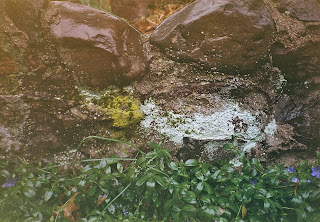A note about my camera reviews, I'm going light on the specs. There are sites that give extensive lists of features for all sorts of cameras. I don't need to repeat any of that.
My uncle was looking to get rid or this one, so, I told him that I'd sell it for him. He had an entire kit:
Canon AE-1 camera body
Canon FD 28mm wide-angle
Canon FD 50mm normal lens
Canon FD 135mm telephoto
Canon 300 EZ speedlight,
My idea was to purchase the whole thing from him, run some rolls through it and then re-sell it. I was mostly interested in the historical significance of the Canon AE-1. I had to throw out the flash; the leak from the two AA alkaline batteries was too much to clean. The rest, I'm either going to sell on ebay, or see If I can trade the whole kit for a new lens that I really want.
The growth of consumer microelectronics in the 1970's allowed the big Japanese camera companies, (Canon, Nikon, Pentax, Olympus, Minolta) to start selling quality, reliable, automated SLR cameras at a price attractive to non-professionals. In 1976 (the same year of the first Apple II), Canon introduced the AE-1. The AE-1, (including it's improved successor: the "AE-1 Program") was produced until 1984. The AE-1 was aimed at offering an inexpensive, quality machine to the enthusiastic amateur snapshooter, and was very successful in this realm. It was a true volkskamera which they sold through a long-running and brilliant "So Advanced-It's simple" advertising campaign.
The AE-1 is a lightweight, mostly plastic, but classic looking machine. The top and bottom are plated in a bright, creamy chrome. The controls feel firm and solid. It has a useful shutter lock lever. I do loathe the depth of view preview lever, an overly complicated affair that is not worth trying to use. A PX28 6-volt battery is inserted behind the door on the front face of the camera.
The AE-1 takes Canon's excellent manual focus "FD" series lenses. They have metal barrels, and fine glass. They feel feel nice and rugged, and focus smoothly. Unlike Nikon, Canon changed it's entire lens mount when it went autofocus, so you need older cameras to enjoy the FD lenses. The AE-1 is a very affordable way to do that.
The AE-1 has two modes: shutter priority automatic and manual. The "AE-1 Program" has full program automatic. You can use this camera in full manual, theoretically, but, you have to go through a lot of hoops to accomplish that. When you meter the scene, the needle in the viewfinder points to the recommended f-stop for the shutter speed you have chosen. This is the only information that you have inside the viewfinder. It doesn't tell you what your actual settings are, or how off your exposure is. I cannot recommend the AE-1 to anyone wanting to get serious as a photographer and looking for a camera to grow into.
It's not a manual camera. I repeat, it's not a manual camera.
This camera is really meant to be used in shutter-priority auto, and in this mode the camera truly shines. You pick the shutter speed you want to use for your shooting situation. Then, you just need to concentrate on focus and composition. In this way, the AE-1 is easy and fun to use.










